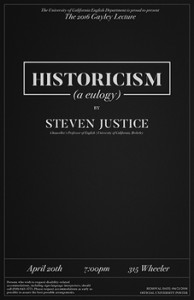Kokoro Confidential: Edwin McClellan, Friedrich Hayek, and the Neoliberal Reading of Natsume Sōseki
The essay begins:
In a 1962 letter to the conservative Relm Foundation, Austrian economist Friedrich Hayek (1899–1992) discussed plans for disseminating his brand of neoliberalism in Japan. Hayek would win the Nobel Prize for economics in 1974, and by then he had long since established himself as one of the most influential neoliberal thinkers of the Cold War years. In the letter, he discussed a “deliberate campaign” that would bring “libertarian scholars” to Japan, and that would culminate in a Tokyo meeting of the neoliberal network he led, the Mont Pèlerin Society. Hayek emphasized that “there seems now to be a receptive atmosphere for libertarian ideas in Japan, and if this is true the effects of some well directed efforts may be of crucial importance with this volatile people.” Hoping to capitalize on this “receptive atmosphere,” he also arranged for his recent book, The Constitution of Liberty (1960), to be translated into Japanese by Paul Nishiyama, one of his graduate advisees on the Committee on Social Thought at the University of Chicago. Hayek would visit Japan four times between 1964 and 1971, and he once wrote that these were “immensely enjoyable” visits that had led his wife to “[take] up the study of Japanese.”
Today, Hayek’s ideas are part of larger dialogues in Japan, the United States, and elsewhere about the culture and politics of neoliberalism. These discussions have only become more urgent in the years since the global economic collapse of 2008. In particular, the question of whether neoliberal reason is the cause or the cure of our current economic and social strife has recently attracted the attention of scholars in fields ranging from political science and economics to history and anthropology. This essay aims to contribute to these discussions by thinking through the cultural dynamics of neoliberal reason from the perspective of modern Japanese literature.
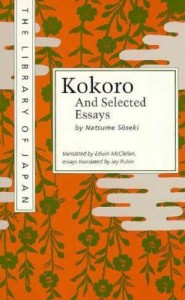 My analysis is premised on a concrete connection between the seemingly disparate fields of modern Japanese literature and Hayekian neoliberalism: In 1957, the most famous novel of modern Japan, Kokoro (1914) by Natsume Sōseki (1867–1916), was translated into English by Edwin McClellan (1925–2009), who was at the time one of Hayek’s advisees on the Committee on Social Thought at the University of Chicago. McClellan was born in Japan to a Japanese mother and a Scottish father, and he counted both Japanese and English as native languages. The novel he translated while working with Hayek, Kokoro, is a literary masterpiece that centers on the relationship between an alienated university student and an older man, known only as “Sensei” (my teacher), who shares his thoughts on the loneliness of the modern world with the student before committing suicide just after the death of the Meiji Emperor in 1912.
My analysis is premised on a concrete connection between the seemingly disparate fields of modern Japanese literature and Hayekian neoliberalism: In 1957, the most famous novel of modern Japan, Kokoro (1914) by Natsume Sōseki (1867–1916), was translated into English by Edwin McClellan (1925–2009), who was at the time one of Hayek’s advisees on the Committee on Social Thought at the University of Chicago. McClellan was born in Japan to a Japanese mother and a Scottish father, and he counted both Japanese and English as native languages. The novel he translated while working with Hayek, Kokoro, is a literary masterpiece that centers on the relationship between an alienated university student and an older man, known only as “Sensei” (my teacher), who shares his thoughts on the loneliness of the modern world with the student before committing suicide just after the death of the Meiji Emperor in 1912.
McClellan’s translation of Kokoro deeply moved Hayek. In fact, McClellan’s literary rendering of Sōseki’s poetic prose so powerfully affected Hayek that he later hired McClellan to polish the language of his own writings, including such classics of neoliberal thought as The Constitution of Liberty and Law, Legislation and Liberty (3 volumes; published in 1973, 1976, and 1979). While moonlighting as an editor (of sorts) for Hayek, McClellan was better known as an influential professor of Japanese literature at Chicago and, later, Yale. During this time, his translation of Kokoro was probably the most widely assigned novel in courses on modern Japan taught in America. The prominence of the translation, though, can make us forget that it was actually undertaken at a time when the field of Japan studies in American academe did not yet exist, and by a graduate student who was trained by scholars who knew almost nothing about Japan.
In the 1950s, after all, McClellan was studying with social scientists, philosophers, and economists affiliated with the Committee on Social Thought at Chicago—not Japanologists. In a 1956 letter of recommendation, in fact, Hayek described McClellan as a political scientist: “[McClellan] is an unusually cultivated man of wide interests and is now employing his good background in economic and political science for a study of certain very important intellectual trends in Japan—an aspect of the influence of Western ideas on the political developments in that country.” McClellan’s translation of Kokoro would go on to become standard reading for generations of students interested in modern Japan, but the point of departure for my own analysis is that it was originally composed and received within the context of a nascent neoliberal movement led by his advisor, Hayek.
This essay focuses on the possibility that intellectuals in 1950s America who knew little about Japan may have found in McClellan’s translation of Kokoro a literary rendering of the neoliberal sensibilities that they were then conceptualizing in expository texts of their own. I begin by examining McClellan’s contacts at Chicago in the 1950s and limn his position within a circle of neoliberal thinkers who became the first readers of his Kokoro translation. I then read the translation itself in the context of the neoliberal conviction that “great books” and other expressions of bourgeois culture reveal the universality of the human condition. I pay particular attention to how the translation might have engaged the antihistoricst sensibilities of McClellan’s Chicago contacts in passages where he scrubbed Sōseki’s language of its cultural specificity, and in passages where the formal qualities of the narrative itself distribute readerly sensibility in the direction of a timeless humanism beyond the boundaries of cultural and historical particularity. These analyses lead me to conclude that McClellan’s translation supplied a way of feeling the ambience and atmosphere of neoliberal reason without ever invoking the sign of “neoliberalism” per se. For in moments when Sōseki’s translated prose led readers to forget the name of the neoliberal ideas that it allowed them to feel, the aesthetic atmosphere of McClellan’s Kokoro itself became, as it were, all the names of neoliberalism. Continue reading …
As a graduate student at the University of Chicago in the mid-1950s, Edwin McClellan (1925–2009) translated into English the most famous novel of modern Japan, Kokoro (1914), by Natsume Sōseki. This essay tells the story of how the translation emerged from and appealed to a nascent neoliberal movement that was led by Friedrich Hayek (1899–1992), the Austrian economist who had been McClellan’s dissertation advisor.
BRIAN HURLEY will be joining the faculty of Syracuse University in the fall as an Assistant Professor of Japanese literature, film, and culture. His research has also appeared in the Journal of Japanese Studies and in the Japanese-language journal of literary criticism Bungaku. He is currently working on a book manuscript that examines the confluences of literature and thought in modern Japan.

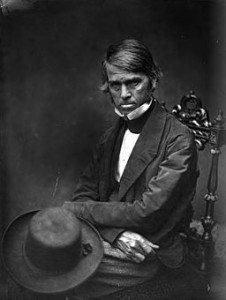 If, for Henry David Thoreau, “hospitality is the art of keeping you at the greatest distance,” then no one was more hospitable than Thomas Carlyle; after all, Carlyle’s ability to keep his friends at a distance was no less than his ability to keep them. Nothing Americans might think, after the publication of his Latter-Day Pamphlets in 1850, could heal over the wound they felt straightaway that Carlyle “mocked the admiration” he lived to gain and that, for all the gratitude he had toward us, he also, says Henry James Sr., “hated us.” There may have been “an inexplicable rapport,” writes Walt Whitman, between himself and Carlyle, but, judging by Carlyle’s anti-egalitarianism, bigotry, and scorn of democracy, Whitman was “certainly at a loss to account for it.” Who could excuse, and in any case who could deny, the harmful effect of Carlyle’s contempt for abolitionism, suffrage, and social reform? He “stands for slavery,” Ralph Waldo Emerson writes; he “goes for murder, money, capital punishment” and is as “dangerous as a madman. Nobody knows what he will say next or whom he will strike.” Apparently, vegetarianism bothered him. If you praised republics, he liked Russian czars. If you urged free trade, he remembered he was a monopolist. “Cease to brag to me,” says Carlyle, “of America and its model of institutions and constitutions…. They have begotten, with a rapidity beyond recorded example, Eighteen Millions of the greatest bores.” The press describes his work “On Heroes”—his attempt to substitute a new “hero-archy” for lost hierarchies in society and government—as a recipe for “unadulterated despotism” and “more especially how to catch masses of people and indoctrinate them with the feeling of obedience.” When we read his essay “Dr. Francia,” an apology for the supreme dictator of Paraguay, it is not hard to see why, by the 1930s, Carlyle’s theory of the hero seemed compatible with German fascism or that essays from that time, including “Carlyle Rules the Reich,” suggest that Hitler’s own belief in his “fulfillment of duty” to the majorities could “be expressed in familiar old phrases from Carlyle.” In 1945, when Joseph Goebbels tried to dispel Hitler’s sense of defeat, he read to him from Carlyle’s book on Frederick the Great–Hitler’s favorite book.
If, for Henry David Thoreau, “hospitality is the art of keeping you at the greatest distance,” then no one was more hospitable than Thomas Carlyle; after all, Carlyle’s ability to keep his friends at a distance was no less than his ability to keep them. Nothing Americans might think, after the publication of his Latter-Day Pamphlets in 1850, could heal over the wound they felt straightaway that Carlyle “mocked the admiration” he lived to gain and that, for all the gratitude he had toward us, he also, says Henry James Sr., “hated us.” There may have been “an inexplicable rapport,” writes Walt Whitman, between himself and Carlyle, but, judging by Carlyle’s anti-egalitarianism, bigotry, and scorn of democracy, Whitman was “certainly at a loss to account for it.” Who could excuse, and in any case who could deny, the harmful effect of Carlyle’s contempt for abolitionism, suffrage, and social reform? He “stands for slavery,” Ralph Waldo Emerson writes; he “goes for murder, money, capital punishment” and is as “dangerous as a madman. Nobody knows what he will say next or whom he will strike.” Apparently, vegetarianism bothered him. If you praised republics, he liked Russian czars. If you urged free trade, he remembered he was a monopolist. “Cease to brag to me,” says Carlyle, “of America and its model of institutions and constitutions…. They have begotten, with a rapidity beyond recorded example, Eighteen Millions of the greatest bores.” The press describes his work “On Heroes”—his attempt to substitute a new “hero-archy” for lost hierarchies in society and government—as a recipe for “unadulterated despotism” and “more especially how to catch masses of people and indoctrinate them with the feeling of obedience.” When we read his essay “Dr. Francia,” an apology for the supreme dictator of Paraguay, it is not hard to see why, by the 1930s, Carlyle’s theory of the hero seemed compatible with German fascism or that essays from that time, including “Carlyle Rules the Reich,” suggest that Hitler’s own belief in his “fulfillment of duty” to the majorities could “be expressed in familiar old phrases from Carlyle.” In 1945, when Joseph Goebbels tried to dispel Hitler’s sense of defeat, he read to him from Carlyle’s book on Frederick the Great–Hitler’s favorite book.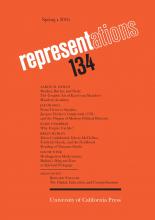
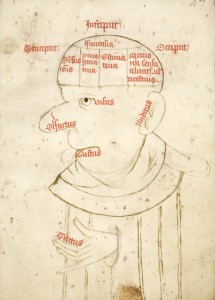
 Representations board members
Representations board members 
